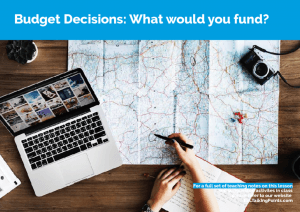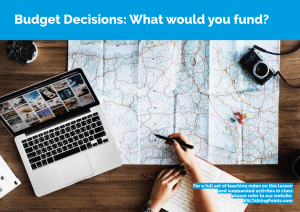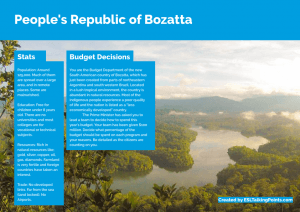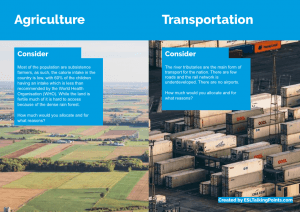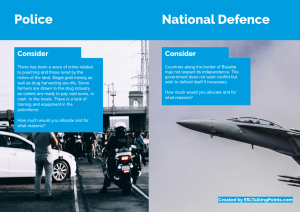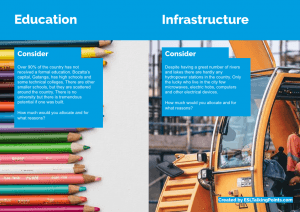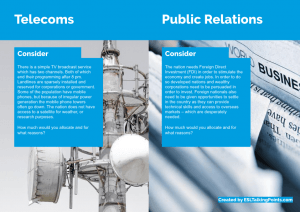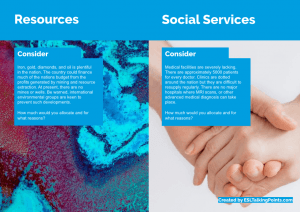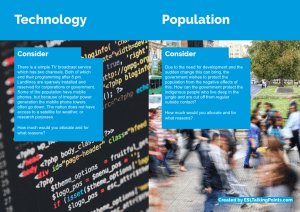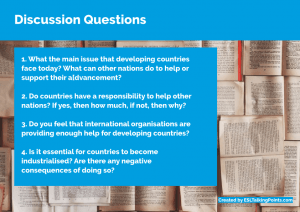Peoples Republic of Bozatta: Budget Decisions
- Language level: B1+
- Aim: Team discussion and decision making. Building leadership and critical thinking skills.
- Learner type: Young learners; Teens; Adults
- Time: 45 – 60 minutes
- Materials: PDF text and images, can be printed or used on an in-class projector.
Welcome to Bozatta, a land-locked nation located deep in the jungle of South America. As one of the world’s newest nation, how should this small and underdeveloped country be helped? Where should government finances be directed?
Download the full PDF of People’s Republic of Bozatta: Budget Decisions
Preview of enclosed PDF
Teacher Instructions
- Tell students that they are going to imagine a country that is “less economically developed” and is currently experiencing issues with its development. They may provide a list of countries at this stage. [1 minute]
- Put students into small groups and ask them to guess what kind of challenges this country might face, it could be social, financial, technological, ecological. Also, have the group try to explain why it might be a problem. For instance, a poorer nation may have a problem with crime, so this makes people feel nervous about investing money in the country. Groups can share their ideas as a class or with other groups. [10 minutes]
- The next step is to have students watch this youtube video, which briefly explains why some countries are poor and others are rich: [20 minutes]
Before watching the video ask students to think about the following questions:
- How are “poor” countries generally defined?
- How much money is lost due to corruption?
- It is true or false that the less religious a country is the more likely they are to be rich?
- Is it easier to grow food in tropical climates?
- Can a landlocked (a country not near the sea/ocean) be rich?
Answers:
- Under $1000 per capita (or per person)
- Almost $10 to $20 billion per year
- True, the populations of the 19 richest countries in the world say they are not religious
- It is harder, the temperature is usually higher and soil quality is lower.
- Usually no, but some are.
- Next, ask students to share what they found surprising from the video? [5 minutes]
- Then, show the students the People’s Republic of Bozatta slides/PDF. You can either show them on a projector in the class. Alternatively, you can print them and cut them in half, so that each topic (agriculture, crime, economy etc) are all on a single sheet. These sheets can be divided amongst the students, or per team, or can be placed on the walls of the class and have students walk around to absorb all the information. The choice is yours. [10 minutes]
- Have students work in small groups of around 3-4 and encourage them to think of solutions for each of the problems faced by Bozatta. This could take time, roughly 30 minutes would be enough. Have them use the following method:
- What are the issues?
- Why is it a problem?
- What can be done?
- How/why is it practical?
- How much will it cost?
- Is the solution efficient?
- Once each group has found solutions and have developed a plan, they can then share this with the entire group. Try to encourage each student to share their ideas and keep each presentation limited to 10 minutes.
- Have all the students ask questions about each presentation and encourage them to think about the consequences of the solutions proposed. [20 minutes]
- Lastly, the students can vote on the best idea presented. [2 minutes]
I hope you enjoy this lesson, please do try it in class and let me know how it went in the comments below.
